Considerable uncertainty surrounds the origins of wandering immature Bearded Vultures in Europe, with ongoing debates around both the source populations of vagrant birds and the self-sustaining nature of reintroduced populations. Native to mountainous regions across the Palearctic and Africa, European populations consist of remnant populations in the Pyrenees and on islands of Crete and Corsica, as well as reintroduced populations in the Alps, Andalucia and Cantabria. In 2015, the entire European population was estimated as consisting of between 580 and 790 pairs (BirdLife, 2015).
First noted in the UK on 25 June when it flew over Kenilworth (read more about the initial find here), a young Bearded Vulture made its way north, settling in the Peak District in early July, on the Derbyshire and South Yorkshire border, becoming a national media star and delighting many British birders in the process. It had earlier been seen in northern France and on Alderney, where it became the first Channel Islands record. Intriguingly, it was seen to head high north from the island during its stay – a direct line towards the Dorset coast – before returning to France and exploring the environs of The Netherlands and Belgium before making a successful Channel crossing. This first-summer bird does not have any ring or markings, suggesting it is a wild-hatched bird which is likely to hail from either the Alps or the Pyrenees – the only way to know for certain is through genetic analysis, such as via a feather or blood sample. Interestingly, this occurrence mimics the only other British record from May 2016, which was seen in Belgium before exploring Gwent and south-west England.
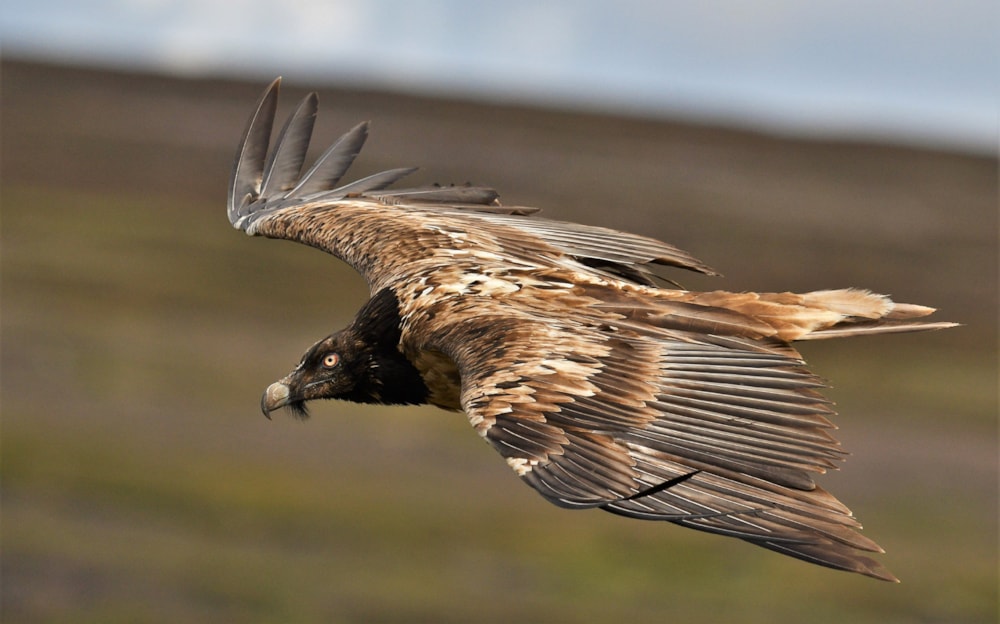
The Peak District Bearded Vulture is the second British record, after one in England and Wales in 2016 (Derek Burr).
Until 200 years ago, Bearded Vulture was found all across the southern European mountain ranges from Western Spain to the Balkans, but since the early 20th century the European populations have come under pressure from poisoning, shooting and collisions. The species was persecuted fanatically due to a belief that they killed livestock such as lambs (hence their former English name Lammergeier, which translates to 'lamb killer' in German) and even abducted babies. Subsequently, the vulture slowly disappeared across much of its former range, with local extinctions occurring in the Alps in 1913, Sardinia in the 1960s, Andalucia in the 1980s, and, most recently, the Balkans in the early 21st century. The European population as a whole reached a low point in the mid-1970s.
The year 1986 saw the Alpine reintroduction programme begin in Austria, when four individuals were released in the Hohe Tauern National Park. To date, 233 birds have been released since the start of the programme. Franziska Lörcher, a biologist with the Vulture Conservation Foundation (VCF), stated that the Alps now have "a small, but self-sustaining Bearded Vulture population again" (Lörcher, 2020) and the population currently averages "0.63 young birds per breeding pair, and the survival rate of the individual animals is over 90%". Last year saw 57 territories in the Alps, a new record, in which 39 wild-hatched youngsters fledged (VCF, 2020). The population is now sufficiently established to have seen a number of second-generation birds since 2013, where both parents are wild-hatched, and there are currently between eight and 12 pairs composed of two wild-hatched parents. Small-scale releases in the Alps continue for the purposes of improving the population's genetic diversity and to prevent future inbreeding, while the focus has switched to restoring Spanish populations in Andalucia and Cantabria. Reintroductions also continue in the French Massif Central to link populations in the Alps and Pyrenees. The Pyrenean population has similarly recovered from around 35 fledglings per year in the nineties to 70 in recent years, with 100 established pairs.
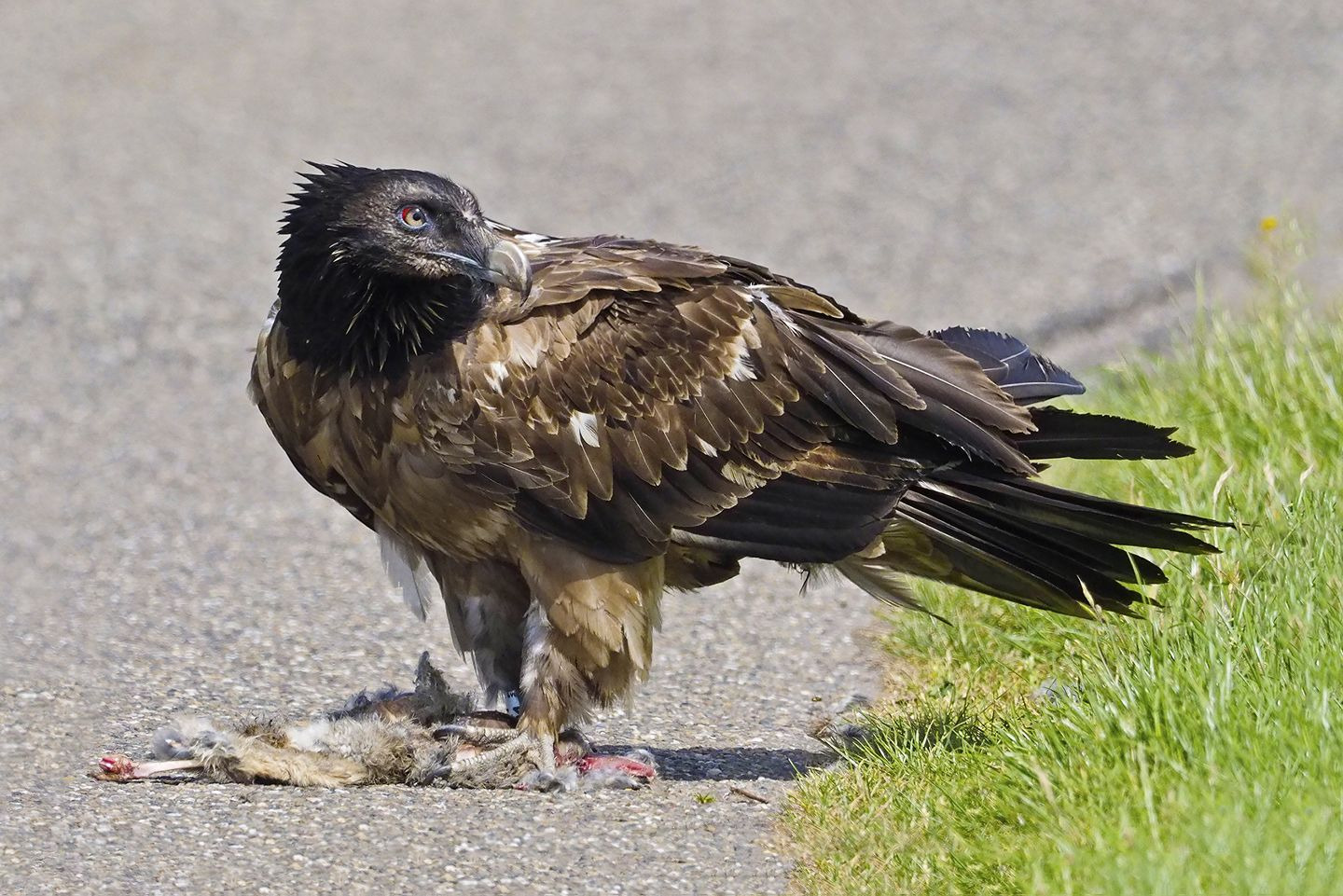
Lucky, a captive-bred bird released in Austria, turned up on the Dutch island of Texel in 2017 before returning to the Alps (Stephan Gomes).
Several extralimital records of the species exist from across Europe, from both before and after the commencement of the Alps reintroduction project. An immature was shot at Cieszyn, Poland, between 1886 and 1887 (Stawarczyk et al, 2017), while another individual was recorded on the Polish-Czech Republic border in 1831. Glutz von Blotzheim et al (1971) also note records of birds collected near Karlsruhe and Würzburg, Germany, in the early 20th century. The Alps saw seven individuals recorded between 1930 and 1986, while in Spain, around 130 records exist of Bearded Vultures showing up outside the Pyrenees in areas where they are formally extinct. In France, two were recorded in Arles before 1840, with another in Montpellier (Touzé pers comm). One was shot at Mont Ventoux, Vaucluse, on 8 July 1903, with another shot in the Massif de l'Esterel before 1925, while one was in the north of the country on the Île d'Oléron in 1936. More recently, an immature was in the Alpilles National Park on 17 April 1973, while one was at Cosne-d´Allier in August 1975 and another was in the lower Ardèche on 21 June 1980. The Belgian Ardennes saw a single record in 1982 (Pohlmann pers comm). Interestingly, there is a record of an adult shot in England near Woodbridge, Suffolk, in 1890 (Piotrowski and Murphy, 1989), although this doesn't fit the pattern of wandering immature individuals. It has been published as an escape, although it could also potentially have been imported as a specimen.
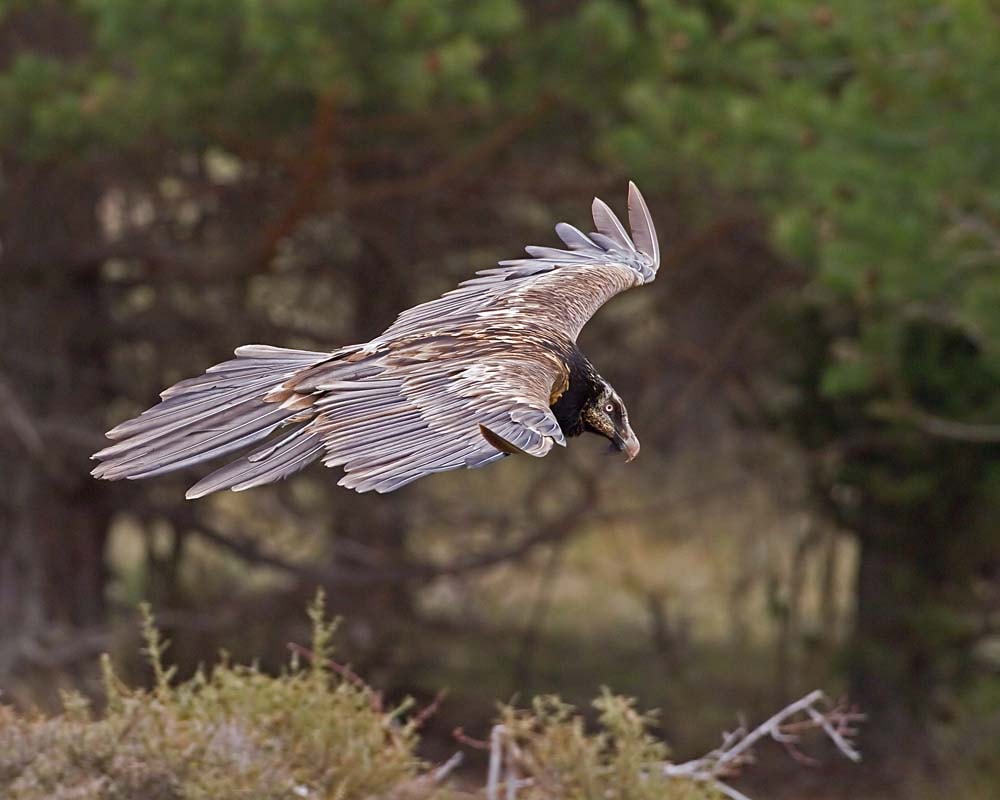
The Pyrenees is home to a Category A population of Bearded Vultures which have been known to wander in the past (Garth Peacock).
A study looking at historic gene flow between different European populations investigated museum specimens collected between 1850 and 1925. Gautschi et al (2001) found that the populations were interconnected, with an average migration rate of 0.94 birds per generation. This proves that dispersal historically occurred between populations, even leading to breeding, and is considered to be significant to the species' long-term survival by diversifying the gene pool. This rate differed between populations, with a rate of 1.62 between the Alps and Sardinia, 1.27 between the Alps and mainland Greece, and 1.08 between mainland Greece and southern Spain. Although it is predominantly a philopatric species that returns to breed within a 20-km radius of where it fledges, the Alpine population only shows 50-70% philopatry.
Since 1986, the year the Alpine reintroduction scheme began, there have been 18 records of released birds showing up outside the Alps until 2016, while there have been 19 records of wild-hatched birds in north-western Europe in the same time period. There were 17 records in The Netherlands between 1997 and 2016 (CDNA, 2018), including both released and wild-hatched birds, while there have been four in Belgium since 2011, with an earlier record in 1998 – at least two of which were confirmed as Alpine releases. Five have reached Denmark since 2003, at least two of which are confirmed Alpine releases. Especially notable, the Norwegian island of Utsira hosted a wild-born immature on 13 June 2003 (Mjølsnes et al, 2005), which had been earlier seen in Denmark. Also worthy of attention, a Pyrenean individual is now breeding for its third consecutive year in the southern Alps, continued evidence of Pyrenean dispersal (Pohlmann pers comm).
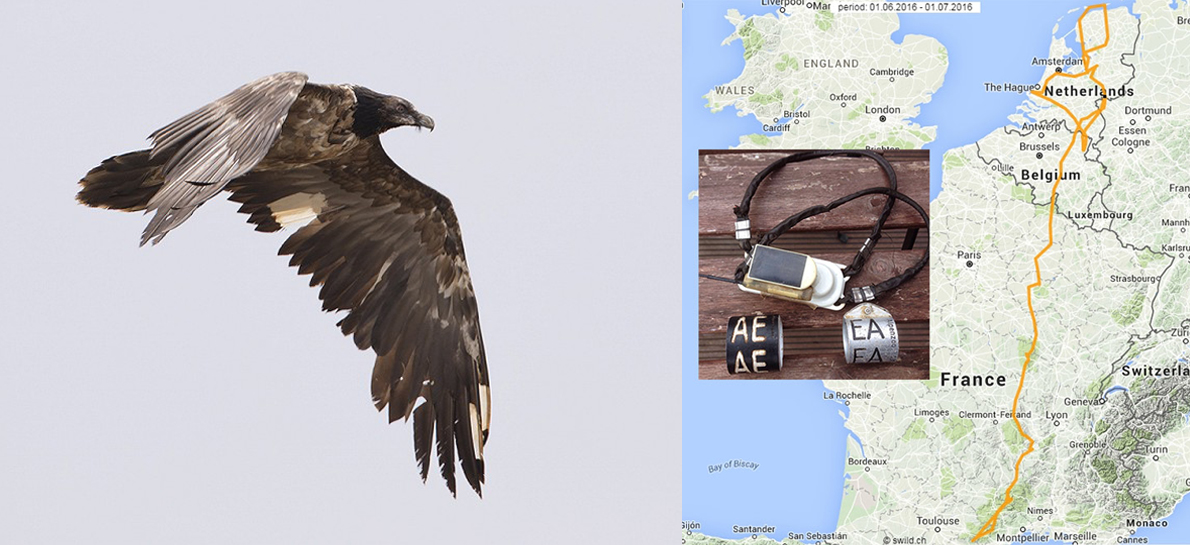
Larzac was captive-bred and released in the Grands Causses, France, before wandering northwards and spending two weeks in the Netherlands in 2016. He later disappeared in Germany, where he was found dead under powerlines. The pattern of bleached feathering is carefully chosen so that some remain into the bird's fourth-calendar-year (Jaap Deene and VCF).
A paper by McInerny and Stoddart (2019), explaining the background behind placing the 2016 individual into Category E of the British List, asserted that vagrant Bearded Vultures were not recorded in north-west Europe before the start of the Alpine reintroduction scheme. On the contrary, while the frequency of records has undoubtedly increased dramatically, a number of historic records show a northerly irruption into north-west Europe. Most notably, this includes two records from France – at Oléron island off the Rochefort coast in 1936 and at Cosne-d'Allier in August 1975 – and the individual in the Belgian Ardennes in 1982. However, the increased frequency of records since the Alpine reintroduction commenced – as well as the high number of records of tracked, released birds – suggests an Alpine origin for the majority of north-west European records.
Individuals from this reintroduced population would be eligible for Category C5 of the British list if the population was considered to be self-sustaining. Category C is defined as "species that, although introduced, now derive from the resulting self‐sustaining populations", with sub-Category C5 referring to "species from established naturalized populations abroad" (BOU, 2018). By conducting a population viability analysis, Schaub et al (2009) concluded that the Alpine Bearded Vulture population has been self-sustaining since 2006, and would continue to be so even if mortality increased by over 50%. It was considered that releasing young could cease without endangering the established population, and frequent catastrophic mortality events such as mass-poisoning did not become commonplace. The paper concluded by recommending ending releases in the Alps and redirecting reintroduction efforts towards other areas where the species is now extinct, although in practice releases continued for purposes of improving genetic diversity. In addition, the population is considered to be self-sustaining by the VCF (Lörcher, 2020; Pohlmann pers comm), the body responsible for the reintroduction project.
Within the Alps, the Austrian rarities committee consider the species under Category D2 (the equivalent of Category E in Britain), not currently classifying the population as self-sustaining (Ranner, 2017). Likewise, the French authorities place birds from the Alpine population into Category E of their national list (CAF, 2020), although this may possibly change soon. The Swiss rarities committee takes a different view, deeming the Alps birds to form a 'Category C' self-sustaining reintroduced population (Vogelwarte, 2018), while the Italian rarities committee place the species in both Categories A and C (CISO-COI, 2019). To date, the species has been placed in Category E in all north-west European nations where vagrants have occurred, apart from Norway, where the record is in Category D (CDNA, 2018; DAK, 2017; Faveyts et al, 2017; Mjølsnes et al, 2005). Category E is defined in Britain as "species that have been recorded as introductions, human-assisted transportees or escapes from captivity, and whose breeding populations (if any) are thought not to be self-sustaining".
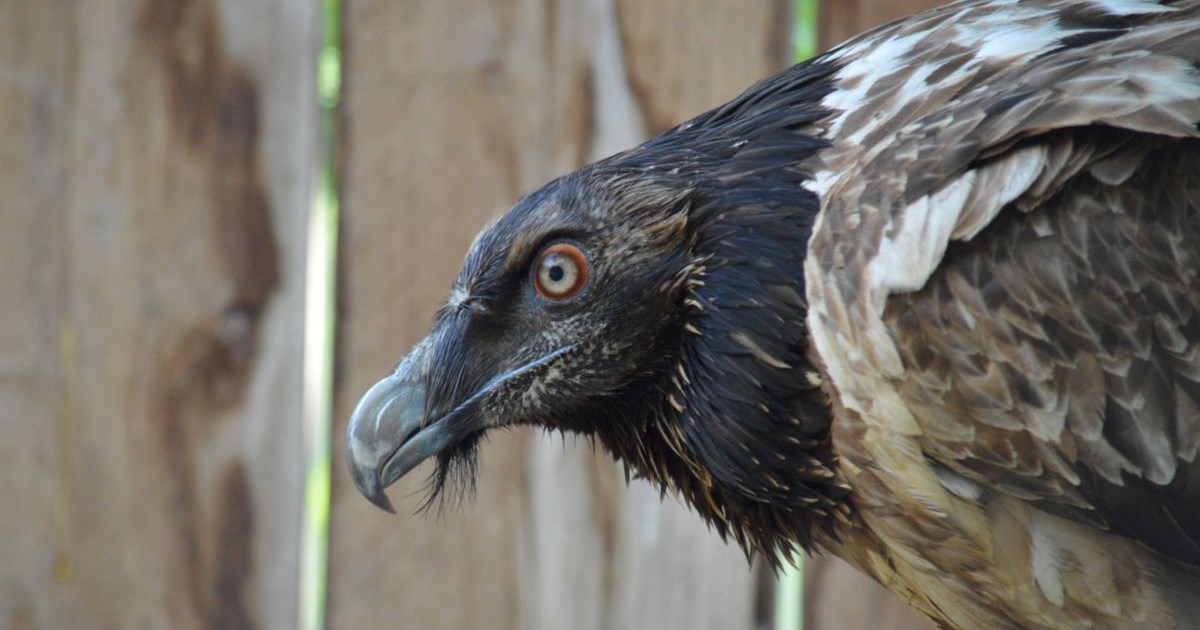
Pierro is the first confirmed wild-bred second-generation bird to have reached north-west Europe (VCF).
It is stated by McInerny and Stoddart (2019) that the reintroduced Alpine populations are not yet considered to be demonstrably self-sustaining by the British Ornithologists' Union Records Committee (BOURC), requiring confirmation of long-term persistence as well as proof that second-generation wild-hatched immatures are wandering to north-west Europe. Earlier in 2020 the second of these two requirements was met, when a wandering Bearded Vulture was rescued just south of the town of Tours in north-west France. Genetic analysis allowed the young bird – a first-summer named Pierro – to be traced back to a nest at Bargy Massif in Haute-Savoie, and whose father was the first wild-hatched bird from the Alpine reintroduction project. You can read more about that bird here.
It is evident that the dispersal of immature Bearded Vultures is an important part of the species' ecology. Such movements are historic and important to a diverse gene pool. Increased dispersal may also indicate a thriving population and while it is suspected that the Alps are the source of the majority of these wanderers, vagrants from the Pyrenees cannot be ruled out. The number of records of vagrants from a time when the Alpine population had become extirpated certainly indicates that this isn't just a recent phenomenon and is not unnatural behaviour. While several national rarity committees do not entertain the Alpine reintroduction to be an as-yet self-sustaining population, it is important to note the findings of Schaub et al (2009), as well as those of the VCF and the various Alpine records committees. The debate has moved on since 2016, when the species was last considered by the BOURC, and the unequivocal proof that second-generation birds are now reaching north-western Europe is another important factor to consider.
Reintroduction schemes are becoming more commonplace across Europe as we look to restore lost links in our complex ecosystems. It is therefore vital that once reintroduced populations are considered to be self-sustainable, they are again considered as important components of European avifauna.
The Vulture Conservation Foundation (VCF) is committed to conservation, restoration and protection of vultures as umbrella species for their natural habitats throughout Europe, with Bearded Vulture as a flagship species. More information on their work is to be found on www.4vultures.org. Please consider a donation to the VCF to help these magnificent birds.
References
BirdLife International (2015) European Red List of Birds. OOPEC: Luxembourg.
British Ornithologists' Union (BOU) (2018) 'The British List: a checklist of birds in Britain', Ibis, 160, p.190-240.
Centro Italiano Studi Ornitologici (CISO-COI) (2019) CISO-COI checklist of Italian birds.
Commission De L'Avifaune Française (CAF) (2020) 'Liste officielle des Oiseaux de France - version 2020 (catégories A, B et C)', Ornithos, 27(3), p.170-185.
Deutsche Avifaunistic Kommission (DAK) (2017) 'Seltene Vogelarten in Deutschland 2015', Seltene Vogelarten in Deutschland 2015, p.2-33.
Faveyts, W., Vandegehuchte, M. and the members of the BAHC (2017) Rare Birds in Belgium in 2016: Report of the Belgian Rare Birds Committee.
Gautschi, B., Tenzer, I., Müller J. and Schmid, B. (2000) 'Isolation and characterization of microsatellite loci in the bearded vulture (Gypaetus barbatus) and cross-amplification in three Old World vulture species', Molecular Ecology, 9(12), p.2193–5.
Glutz von Blotzheim, U., Bauer, K., and Bezzel, E. (1971) Handbuch der Vögel Mitteleuropas. Akademische Verlagsgesellaschaft: Frankfurt.
López-López, P., Zuberogoitia, I., Alcántara, M. and Gil, J. (2013) 'Philopatry, natal dispersal, first settlement and age of first breeding of Bearded Vultures Gypaetus barbatus in central Pyrenees', Bird Study, 60(4), p.1-6.
Lörcher, F. (2020) Bearded Vulture: Bone Breakers return. Web 24 News, March 10. Available at: www.web24.news/u/2020/03/bearded-vulture-bone-breakers-return
McInerny, C. and Stoddart, A. (2019) 'Bearded Vultures in northwest Europe', British Birds, 112, p.26-34.
Mjølsnes, K., Bunes, V. and Solbakken, K. (2005) 'Sjeldne fugler i Norge i 2004 – Rapport fra Norsk sjeldenhetskomité for fugl (NSKF)', Ornis Norvegica, 28, p.4-50.
Piotrowski, S. and Murphy, M. (Eds) (1989) 'The Suffolk Lammergeier (Bearded Vulture)', Suffolk Birds 1989, 38, p.125-6.
Ranner, A. (2017) List of Austrian Bird Species.
Schaub, M., Zink, R., Beissmann, H., Sarrazin, F. and Arlettaz, R. (2009) 'When to end releases in reintroduction programmes: demographic rates and population viability analysis of bearded vultures in the Alps', Journal of Applied Ecology, 46, p.92-100.
Stawarczyk, T., Cofta, T., Kajzer, Z., Lontkowski, J. and Sikora, A. (2018) Rzadkie Ptaki Polski. Polish Avifaunstic Commission: Poland.
Vogelwarte (2018) Checklist of the birds of Switzerland – 2018.
Vulture Conservation Foundation (VCF) (2020) Bearded Vulture European Endangered Species Programme (EEP) Annual Report 2019. Available at: www.4vultures.org/bearded-vulture-eep-annual-report-2019



